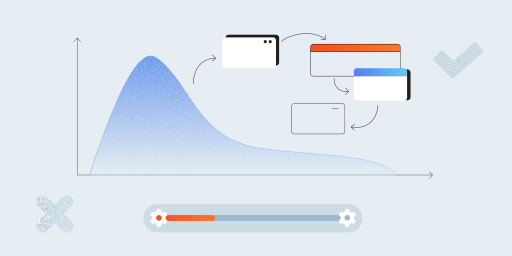We often hear the question “What is software verification and validation?” as a matter. And to answer that, we will go in detail about their differences, why and how we use them in this article.
What is verification in software testing?
A brief explanation of what is verification in software testing would be: it is the process of assessing software to evaluate if the results of a certain development phase meet the requirements established at the beginning of that phase.
Software Verification Testing is the process of examining documentation, designs, code, and programs to determine whether or not the software was constructed in accordance with the requirements. Verification operations include reviews, walk-throughs, and inspections.
Although verification can assist to identify whether the program is of good quality, it cannot guarantee that the system is functional. The purpose of verification is to determine if the system is well-engineered and error-free.
An example of verification in software testing
To answer the question of what verification activity is in software testing, we need to look into Static testing.
Static testing techniques are a strong tool to increase software development quality and productivity by supporting engineers in identifying and correcting their own errors early in the software development process. This program is tested without running the code by doing review, walkthrough, inspection, or analysis, among other things.
Static testing may be done manually or using various software testing tools. It occurs early in the Software Development Life Cycle, during the Verification Process.
Static testing is not a substitute for dynamic testing, but all software companies should consider employing reviews in all key elements of their work, including requirements, design, implementation, testing, and maintenance.
Defects found during static testing include departures from standards, missing requirements, design flaws, non-maintainable code, and conflicting interface definitions.
What is validation in software testing?
A short answer would be that, the method for determining if software meets stated criteria during or at the conclusion of the development process.
Validation is the process of determining if the completed product fulfills the customer’s expectations and criteria. It is a dynamic validation and testing technique for the real product.
An example of validation in software testing
We use dynamic testing to ensure proper validation, below is the example of how we do this.
Software is performed using a set of input values in Dynamic Testing Technique, and its output is then reviewed and compared to what is expected. Dynamic execution is used to discover faults and assess the code’s quality characteristics.
Dynamic testing and static testing are complementary methodologies since they identify various sorts of faults in different ways. However, because it does not begin early in the Software Development Life Cycle, it significantly raises the cost of fault correction.
It is completed during the Validation Process, which evaluates the finished product.
What is the difference between verification and validation?
The discrepancy between the two names is mostly due to the function of specifications.
Validation is the process of determining whether the specification meets the demands of the client. “Did I develop all I claimed I would?”
The process of ensuring that software fulfills specifications is known as verification. “Has everything that was required been developed?”
And below you can find the more glaring differences between the two.
| Verification | Validation |
| 1. Document, design, code, and program verification is a static practice. | 1. Validation is a dynamic process used to validate and test the real product. |
| 2. It does not include running the code. | 2. It always entails running the code. |
| 3. It is based on human verification of papers and data. | 3. It is computer-based program execution. |
| 4. Verification procedures include inspections, reviews, walkthroughs, and desk-checking, among others. | 4. Validation employs techniques such as black box (functional) testing, gray box testing, and white box (structural) testing, among others. |
| 5. Verification is the process of determining if the software meets standards. | 5. Validation is the process of determining if software satisfies the expectations and needs of the client. |
| 6. It can detect mistakes that validation cannot. It is a low-level activity. | 6. It can detect flaws that verification cannot. It is a high-level activity. |
| 7. The goal is to provide requirements, application and software architecture, high level, full design, and database design, among other things. | 7. The goal is to create a real product: a unit, a module, a set of integrated modules, and a functional finished product. |
| 8. The QA team completes the verification of the program to ensure that it meets the standards in the SRS document. | 8. The testing team is involved in the validation process. |
| 9. It is usually completed before validation. | 9. It usually happens after verification. |
Conclusion
Validation and verification are critical components of software development. If comprehensive verification and validation are not carried out, a software team may be unable to build a product that meets the expectations of stakeholders. Verification and validation reduce the chance of product failure and raise the reliability of the final product.
Verification and validation are used in various ways by different project management and software development approaches. In agile development methods, for example, both verification and validation occur concurrently due to the necessity for ongoing system modification based on the end-user feedback.



